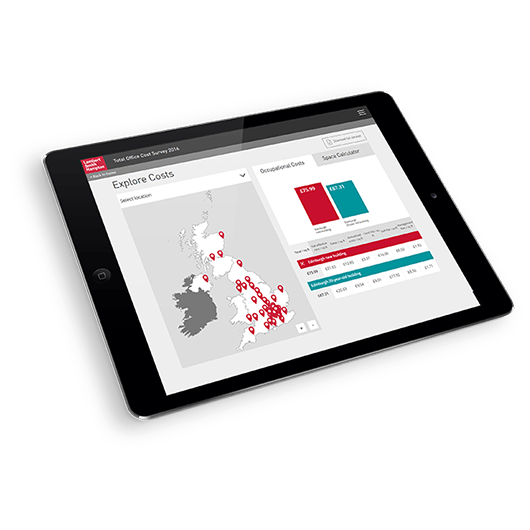Ten or fifteen years ago, a lease expiry or break clause might only occur every decade or three. Now lease lengths have shortened, it could be as frequent as every three years.
This can provide a real opportunity for an occupier - to realign their costs and their real estate footprint, taking into account how the business might have changed. You could create a space that staff really love to be in, reduce energy consumption or boost connectivity.
But there are significant potential pitfalls. Moving offices can be a huge financial outlay and there are many factors to weigh up, not all of them obvious. As well as capital expenditure, you need to consider staff downtime, business interruption and your wider strategy.
Unsurprisingly, many occupiers find it hard to make decisions. We’ve put together some initial points for consideration, based on our market experience.
First, know your lease
The first place the Lambert Smith Hampton team starts is to understand your existing lease. An audit of your current position will tell you if there’s a break option, any preconditions that need to be considered or any associated costs there might be with an exit.
If you do want to move office, you may need to consider obligations relating to service charge or dilapidations. The right advisor will not only help you understand your position, but will help to negotiate points with a landlord. We have helped clients to use a break clause to renegotiate better commercial terms on their existing lease.
We advocate speaking to a landlord as early as possible to understand their plans for the building. You can decide whether your strategy aligns with theirs or whether other tenants have lease expiries that might affect your decision. After all, unless the landlord wants to reposition a building, they’re unlikely to want you to leave.
The earlier you understand your current position, the better. We know of businesses that have accidentally missed a break option, giving them little choice but to stay. And the closer the deadline is to make a decision, the more leeway you give to a landlord.
Ideally, an occupier should start planning 12 to 24 months in advance. This gives you the chance to assess your situation, have conversations with staff and your landlord, and get to the next stage: understanding what you need.
Assess what you’d like to change
When considering whether to move or stay put, there are five areas to consider:
- Financial drivers
- Real estate footprint
- Staff considerations
- ESG
- Technology
Although finance is at the top of this list, it is not always the most important consideration. In reality, each point will have a different weighting depending on your business strategy.
A workplace utilisation exercise is a great place to start analysing the way you use your current workplace to understand current and future workspace needs. During this stage it is essential to establish communication lines with staff. You could take a survey to understand their priorities, while keeping them up to date with developments in your plan.
With any decision there are risks, for example, currently the supply of quality grade A offices is growing tighter. There is a clear lack of prime space in London and whilst there is currently 25 million sq ft of office space available in London, much of it is grade B or less. Between 2024 and 2026, 28 million sq ft of leases across London will come up, which brings high competition for the best spaces.
Be creative
If moving is the right option, but you want to retain some flexibility, a building with wider amenities could be an option. We’ve helped clients move to buildings that have a coworking element, to give them 'core' and 'ebb' space when they need it.
When a business gets office decisions right, the gains can be significant. Staff productivity rises, a business strategy becomes reality and funds are released for other activities. Getting the best possible result boils down to excellent preparation and access to the best professional advice.
Should you want our free Stay vs Go guide or would like a confidential discussion or assessment of your workplace, you can get in touch with the Stay vs Go team.
Key drivers for change
REGISTER FOR UPDATES
Get the latest insight, event invites and commercial properties by email



